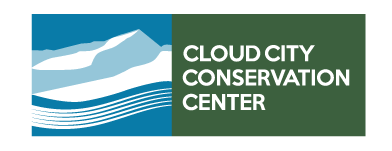Energy Efficiency: Lower Costs at Higher Elevation
By Hannah Harn for Rocky Mountain Home & Garden
May 1, 2025 - Original Article
Across the U.S., the primary uses of energy for homes are heating and cooling, followed by water heating and appliances. In high-altitude areas, home and water heating are even larger pieces of the pie.
Richie Moutoux, energy program director for the Cloud City Conservation Center (C4), says energy efficiency doesn’t mean your thermostat has to sit at 68 while you pile on warm layers.
During energy audits, the biggest savings often come from small things like lighting.
“Energy is expensive these days, and while some newer options do have a significant up-front capital cost, the payback is definitely there.”
“If you save 50% of the (energy) cost that you spent on changing whatever you changed in a year, then you have a two-year payback period,” he said. “Lightbulbs have a six-month to a year payback period to replace them with LEDs.”
It also helps to examine other large energy uses in the house, including heating, cooling, and water heating. Right now, Moutoux said, the popular topic is heat pumps.
“If you live in town and you have natural gas lines and a natural gas furnace, you’re probably not going to save much money on a heat pump,” he said. “But if you live out in the country and you’re on either electric resistance because they’re isn’t gas or if you’re on propane, then you probably do have a huge savings (with heat pumps).”
Due to the colder temperatures, mountain communities typically see higher electric and gas bills compared to the Front Range.
“Whether you get your energy from propane, gas, electric or wood, which a lot of people do in our area, make sure your home has the proper envelope. You want it to be insulated, and you want to make sure you minimize airflow through it. ... Same with water heating – you want to make sure your water heating is in a space where it’s not going to be subject to drafts and that kind of thing.”
That “envelope” includes a home’s walls, ceilings and roof, which need good insulation. Homeowners should make sure that “penetrations,” such as windows, doors and chimneys, are also well-sealed to prevent heat loss through gaps and cracks.
Allen said residents can also take baby steps to make energy-efficient changes, and understanding how your home uses energy is the first step.
With many older builds in Chaffee and Lake Counties, which can date back to the 1800s, seals around windows and doors, as well as the windows and doors themselves, can deteriorate due to the intense sun.
“Caulking and weatherstripping around doors and windows can help cost-effectively improve the comfort of a home,” said Kasey Provorse, Energy Smart Colorado executive director.
Dustin Lewis, owner of Mariposa Window and Door in Salida, said that high-elevation living requires special care for window and door insulation. The simplest way to check windows for leaks is to see if curtains are blowing or if you can feel air coming through.
Window position can also affect your home’s energy efficiency. A lot of people “put in these big south-facing window walls,” Lewis said, “and if you don’t put the right coating on them, your house can be overly hot because of our sun.”
The right coating can protect furniture and knock down UV rays by around 98%. Additionally, windows can take advantage of the sun on the east and west sides of buildings, helping to heat homes.
“We can really do things with passive solar architecture and you can’t do those in most places when not getting a ton of sun.
In Lake County, there’s a huge constraint on the gas lines, so it’s an opportunity where conservation and efficiency can have a bigger effect than in areas with bigger infrastructure.”
Home energy assessments don’t have to break the bank, either. C4 offers energy assessments to make recommendations for efficiency. SDCEA partners with Energy Smart Colorado to connect members with energy audit services. Many utilities offer rebates for energy audits, as well, helping to lower the cost.
“Energy Smart Colorado has funding from SDCEA, Xcel Energy, Chaffee County and local municipalities to bring the cost of the assessment down to $100 for Chaffee County residents,” Provorse said. “Some immediate savings can also be obtained through free quick fix installations at the time of assessment.”
Energy Smart Colorado also has additional support available for households that earn less than 150% area median income to make energy efficiency improvements. Once a home energy assessment is completed, households can apply for support toward air sealing and insulation as recommended by the assessment report. Visit EnergySmartColorado.com to learn more.



